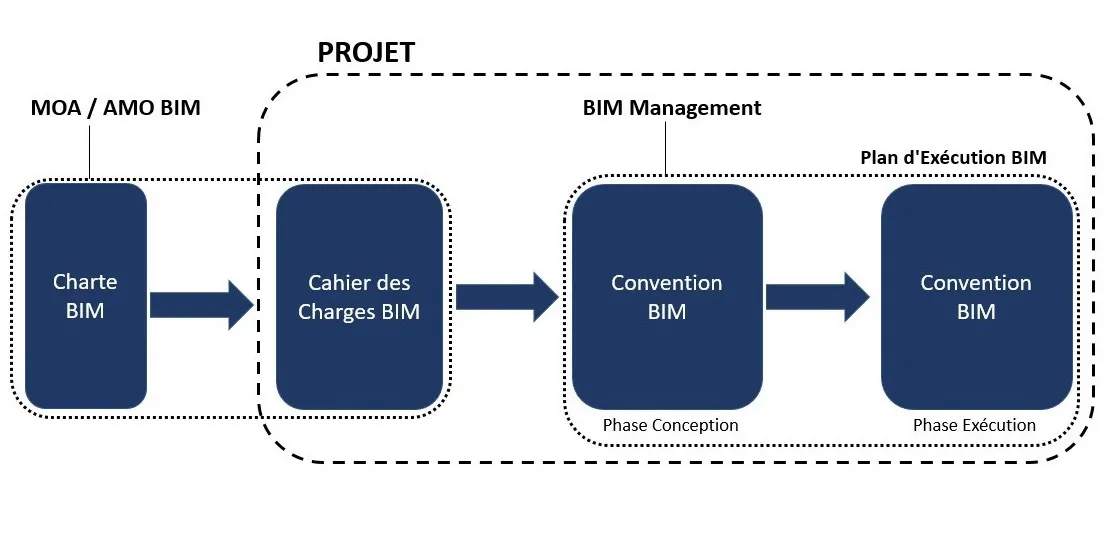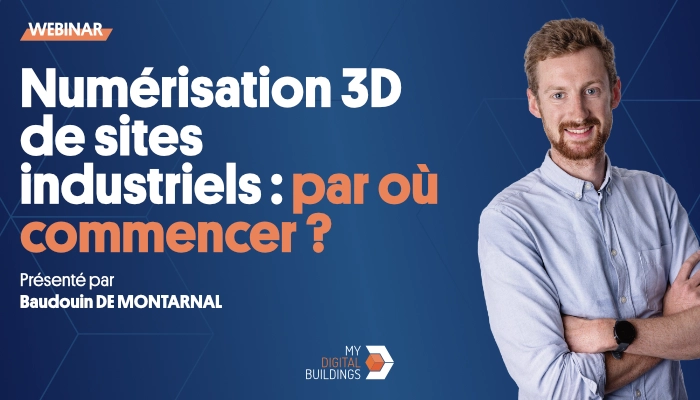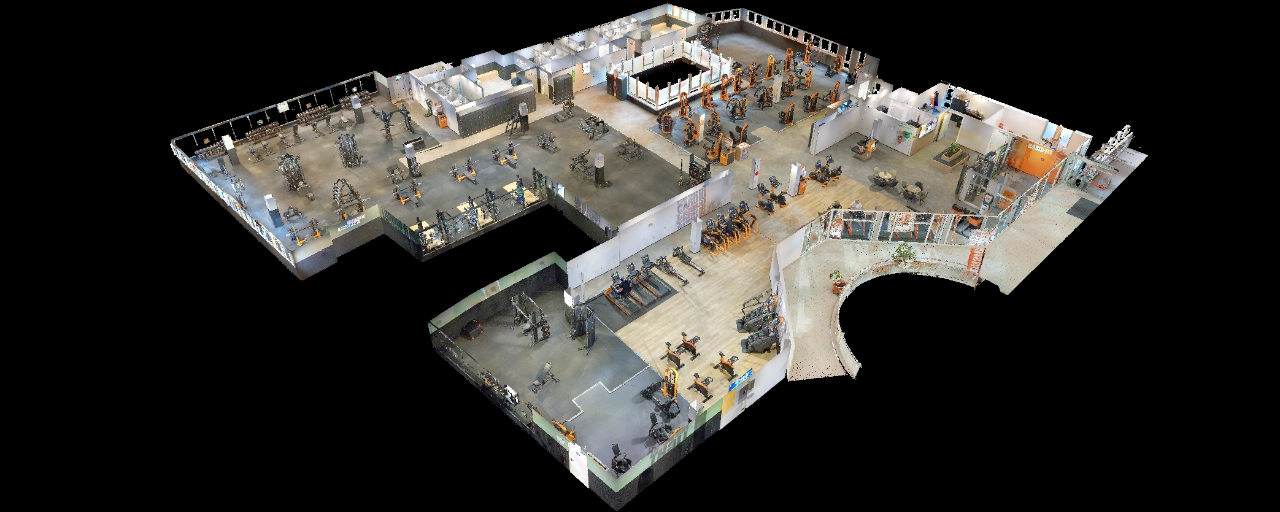
On what documents is a BIM process based?

BIM documents: an organizational basis for its BIM projects.

The BIM documentary corpus consists of a set of documents present during a BIM process that covers the life cycle of the work.
The latter have the role of Vouch The proper implementation and compliance with the BIM objectives set by the project owner,Organize Coordination and exchanges between the various actors and Delineate All the rules and best practices to be respected around the digital model.
Also, the latter appears in an order of succession that can be distinguished through the diagram below:

The lack of legislation regarding the use and application of these documents can sometimes lead to confusion. This is why we invite you to discover in this article the usefulness of each of these documents, and who are the actors involved in the editing and application of these documents.
BIM process documents
Note: Given the absence of standardization, the appointment of these documents may differ from one actor to another, but the use remains the same.
Therefore, in this article, for the first three documents, we will refer to the definitions set out in the guide of recommendations to project owners published on July 6, 2016 by the MIQCP (Interministerial Mission for the Quality of Public Buildings) under the aegis of the PTNB (Plan Transition Numérique dans le Bâble), as well as those present in the BIM 2022 Plan.
Thus, these documents represent a framework proposed at the level of French territory. Internationally, there is still a certain lack of uniformity. Fortunately, French documents are in line with best practices and emerging standards at the international level, and the subject of standardization of standards is progressing day by day.
The BIM Charter
The BIM charter is a generic document drawn up by the client translating its policy into quality and performance objectives expected from BIM for all of its projects. In particular, it identifies the requirements and objectives to be met so that the BIM operations process can feed into the maintenance operation maintenance model of its assets.
→ Contrary to the BIM Specifications, which are specific to a single project, the BIM Charter groups together the objectives in relation to all the Project Owner's projects, thus making it possible to provide a framework for all projects
It is generally the BIM AMO who will be responsible for supporting the MOA in framing its needs, auditing its way of working, and ultimately producing the BIM Charter and the BIM Specifications which will give the MOA a direction.
The BIM Specifications
The BIM Specifications are a document specifying the requirements and objectives of the successive project participants, as well as the BIM use cases, including those of the Building Owner's BIM charter.
The BIM Specifications include the BIM component relating to a single project of the contracting authority. And just like the BIM Charter, the BIM CDC is written by the MOA or L'AMO BIM of the project.
The BIM Convention
Then, it is the BIM Manager of a project who will be inspired by the guidelines of the BIM Charter and the BIM CDC to define the BIM convention, the objective of which is to provide an operational strategy for a project.
During a large-scale project, several BIM agreements may follow one another for each phase of the project (example: a BIM agreement can be established for the design phase, then followed by another agreement for the execution phase for the MOE). All of these agreements define the BIM Execution Plan for the project.
In addition, the agreements themselves evolve since a project takes a significant amount of time. It will therefore be a question of keeping a history of the versions of the various conventions.
Thus, the BIM agreement is the document specifying:
- the organizational methods of the project and the role of each stakeholder;
- graphical representation methods;
- project data management and transfer;
- processes;
- digital model models and software versions;
- uses (concrete use cases that should emerge from the BIM approach);
- the collaborative environment of BIM, making it possible to specify the project workflow.
At each stage of the project life cycle, the agreement evolves and adapts to new actors, new uses or project needs.
The BIM Convention, unlike its predecessors, is established with the participation of the project manager. This evolving document must be regularly updated in order to be in line with the evolution of the project.
Note that the BIM Convention may be called the BIM Protocol in some cases.
Depending on the definitions, BIM Execution Plans and BIM Protocols may have a different role. To simplify things in this article, we prefer to rely on the definitions set out in the BIM 2022 plan.

What to remember
While the actors in a BIM project and their ways of working can multiply, framing a project becomes essential to allow the full and optimal exploitation of a model.
This is why the effort to produce these various documents is essential, all the actors in a project can only benefit from these supports.
And even if no legislative framework gives any obligation concerning these various documents, they tend to become requirements for the smooth running of large-scale projects.
To find out more



Let's study your project together
Contact us, we will study your project to provide you with an estimate as soon as possible
Contact us
To make sure you don't miss out on our news, subscribe to our newsletter now!
Receive quarterly updates directly in your inbox to stay informed about the latest news and events at My Digital Buildings.











